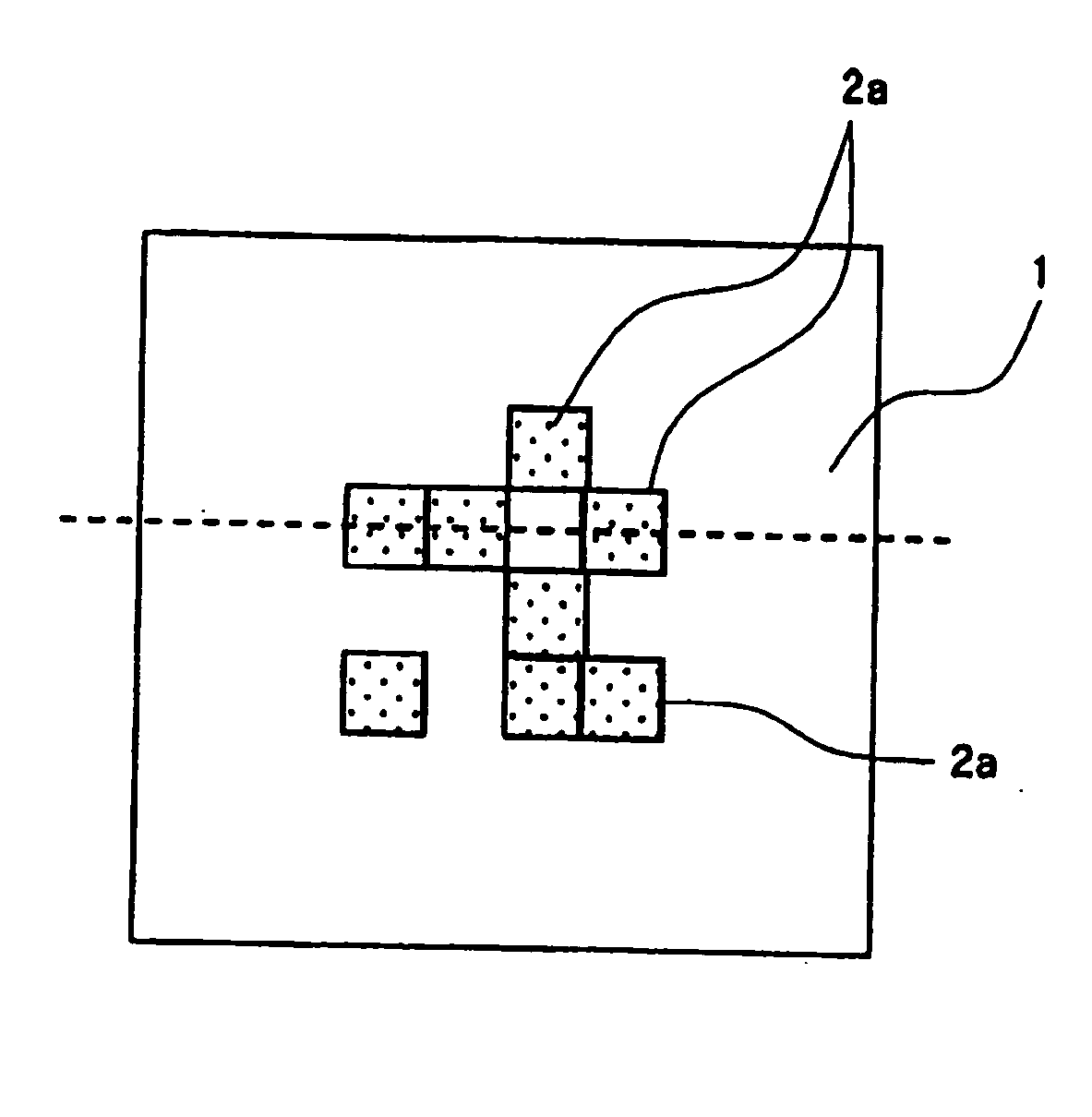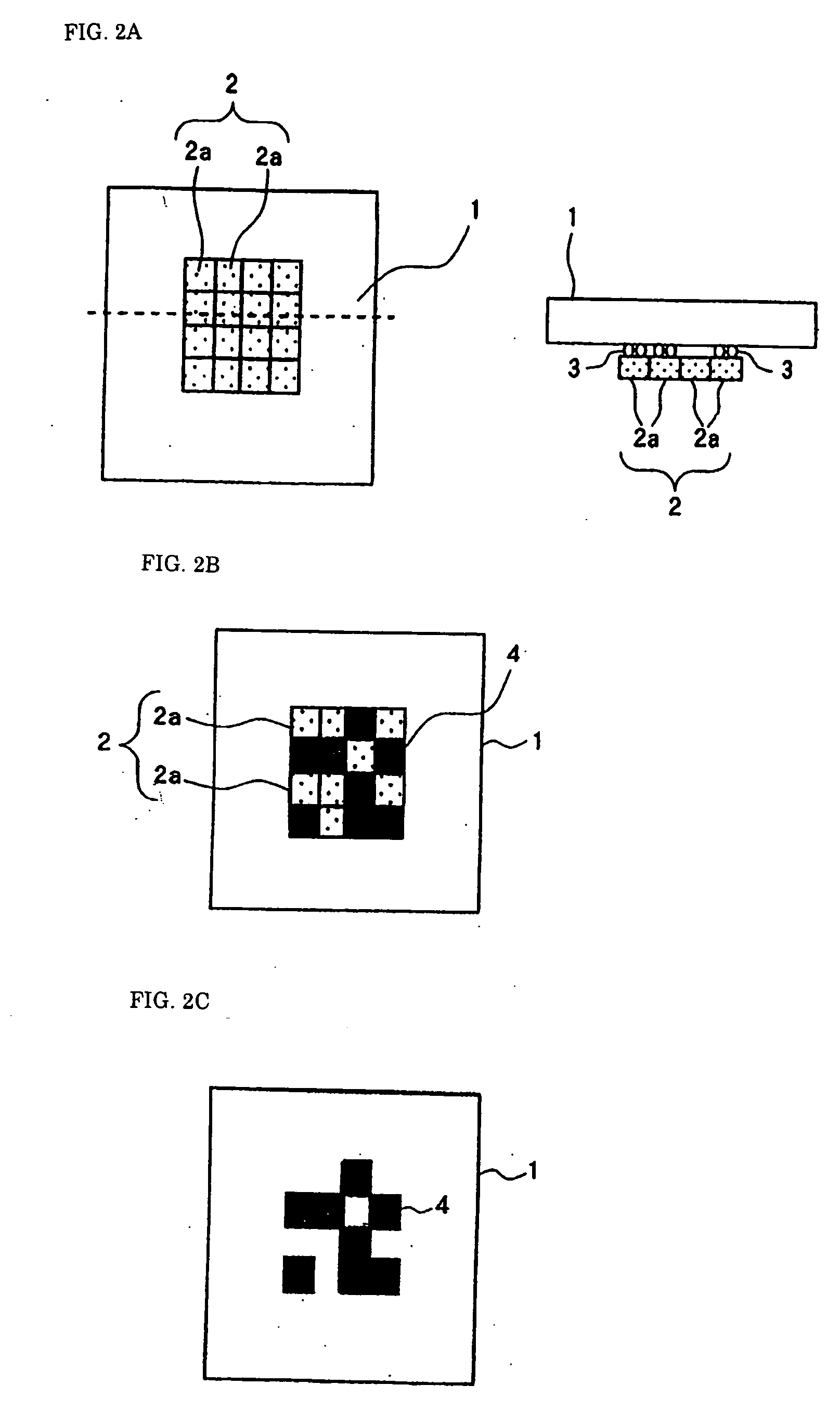Optical-element integrated semiconductor integrated circuit and fabrication method thereof
- Summary
- Abstract
- Description
- Claims
- Application Information
AI Technical Summary
Benefits of technology
Problems solved by technology
Method used
Image
Examples
first embodiment
[0088] Explanation next regards the details of an example of an optical element integrated semiconductor integrated circuit (hereinbelow referred to as “optical-element integrated LSI”) of the present invention with reference to the figures. FIG. 1A is a schematic plan view showing the basic configuration of the optical-element integrated LSI of the present example, and FIG. 1B is a schematic sectional view. In the optical-element integrated LSI of this example, light-emitting device 2a is electrically connected by solder bumps 3 to electrical signal output ports (not shown) of LSI 1. There is a plurality of electrical signal output ports, and these electrical signal output ports are randomly arranged at various positions. In addition, light-emitting devices 2a are mounted at each electrical signal output port. Devices are used for light-emitting devices 2a that are capable of supplying light toward the rear-surface side (the downward side in FIG. 1B) of LSI 1. Accordingly, when an ...
second embodiment
[0094] Explanation next regards the details of another example of an optical-element integrated LSI of the present invention with reference to the figures. FIG. 3 is a schematic plan view showing the general configuration of the optical-element integrated LSI of the present embodiment, and FIG. 3B is a schematic sectional view. In the optical-element integrated LSI of the present embodiment, photodetectors 5a are electrically connected by solder bumps 3 to electrical signal input ports (not shown) of LSI 1. There is a plurality of the above-described electrical signal input ports, and these electrical signal input ports are randomly arranged at various positions. In addition, photodetectors 5a are mounted on respective electrical signal input ports. Devices that can receive light that is incident from the rear surface (the lower side in FIG. 3B) of LSI 1 are used for photodetectors 5a. Accordingly, when ON / OFF optical signals are received as input from the outside, these optical sig...
third embodiment
[0100] Explanation next regards the details of another example of an optical-element integrated LSI of the present invention with reference to the figures. FIG. 5A is a schematic plan view showing the general configuration of the optical-element integrated LSI of the present embodiment, and FIG. 5B shows a schematic sectional view. In the optical-element integrated LSI of the present embodiment, light-emitting devices 2a are electrically connected by solder bumps 3 to electrical signal output ports (not shown) of LSI 1, and photodetectors 5a are electrically connected by solder bumps 3 to electrical signal input ports (not shown). LSI 1 has a plurality of electrical signal output ports and electrical signal input ports, and these ports are randomly arranged at various positions.
[0101] Devices capable of supplying light toward the rear-surface side (the downward side in FIG. 5B) of LSI 1 are used for light-emitting devices 2a. Thus, when an ON / OFF electrical signal is supplied as ou...
PUM
 Login to View More
Login to View More Abstract
Description
Claims
Application Information
 Login to View More
Login to View More - R&D
- Intellectual Property
- Life Sciences
- Materials
- Tech Scout
- Unparalleled Data Quality
- Higher Quality Content
- 60% Fewer Hallucinations
Browse by: Latest US Patents, China's latest patents, Technical Efficacy Thesaurus, Application Domain, Technology Topic, Popular Technical Reports.
© 2025 PatSnap. All rights reserved.Legal|Privacy policy|Modern Slavery Act Transparency Statement|Sitemap|About US| Contact US: help@patsnap.com



